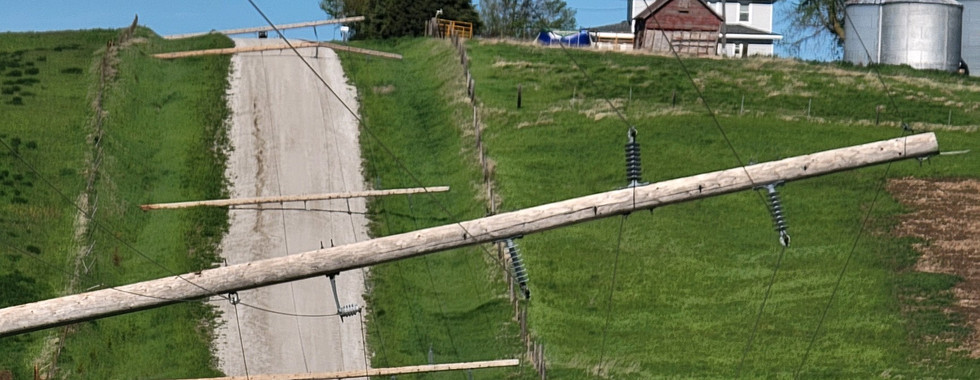
In recent months, western Iowa communities served by Northwest Iowa Power Cooperative (NIPCO) have been impacted by severe weather events such as spring tornadoes and early summer floods. During the July NIPCO Board of Directors meeting, NIPCO Vice President of Engineering & Operations Jayme Huber provided a detailed analysis of damage to NIPCO transmission infrastructure, highlighting the challenges facing the cooperative.

Huber reported that weather-related incidents account for a staggering 72 percent of the total outages reported this year. While many of these outages were brief, causing only a momentary “blink” in service, some lasted several hours, disrupting service reliability to the NIPCO member systems.
To prepare for these challenges, NIPCO launched its comprehensive Renewal and Replacement plan in 2016 to address the needs of aging infrastructure across its entire service footprint. As part of this initiative, NIPCO has already upgraded 402 miles of transmission line, 12 transmission stations, 58 switches, and 63 substations. Additionally, seven new substations have been added to improve the cooperative’s service reliability, creating redundancy in electric delivery and accommodating load growth.
NIPCO works hard to provide an annual 99.99+% reliability level. NIPCO has ambitious plans to continue infrastructure upgrades, focusing on enhancing 240 miles of old transmission line, five transmission stations, 53 switches, and 15 substations. These efforts are crucial for ensuring that NIPCO can continue to deliver reliable and resilient power to its members despite the increasing challenges posed by severe weather. The ongoing investment in hardening the electric infrastructure is essential for better withstanding these impacts and ensuring consistent service to the communities of western Iowa.































































Kommentare